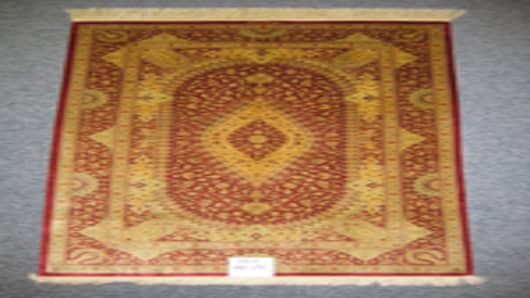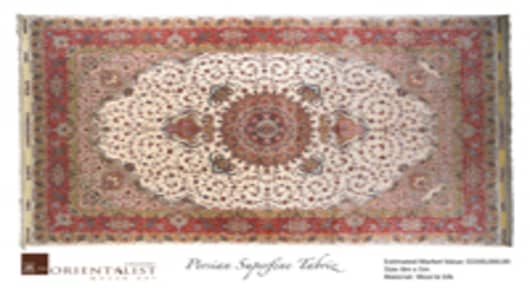
Courtesy: Handmade Carpet Gallery, Singapore
Super-fine silk-on-silk carpet from Kashan, Iran. Measures 4.3 x 6.6 feet and retails for S$10,000 ($7,668)
Foo adds that a collectible carpet is at least 30 years old, while an antique carpet would be at least 80 years old. But don’t despair if the fine rug at home is not 'made in Iran'.
"All hand-knotted fine carpets see their value go up over time especially when well preserved," says Yasser Faiz of Handmade Carpet Gallery, whose family operations span across the U.S., the U.K., Australia and Dubai. Faiz cites the example of a prominently featured, fine double-knotted Pakistani rug at the Istana, the official residence of the President of Singapore.
That said, Faiz does point out that silk carpets from Iran have doubled in price in the last five years. For instance, 3 x 5-meter silk rugs which were purchased about $1,000 15 years ago, now command as much as $4,000.
But before you start making your way to the nearest Persian rug dealer near you, here are some quick tips from the pros.
- Visit 3-4 carpet dealers before selecting one.
- Measure dimensions for symmetry.
- Check density as well as bumps/unevenness when laid on the floor
- Seek expert advice. Don’t expect to gain investment quality on the cheap.
When it comes to maintenance, cleaning with a short brush with stiff bristles is ideal; but if you choose to vacuum, do so only once every few weeks. Also, avoid pushing the carpet heavily in the opposite direction of the pile.



